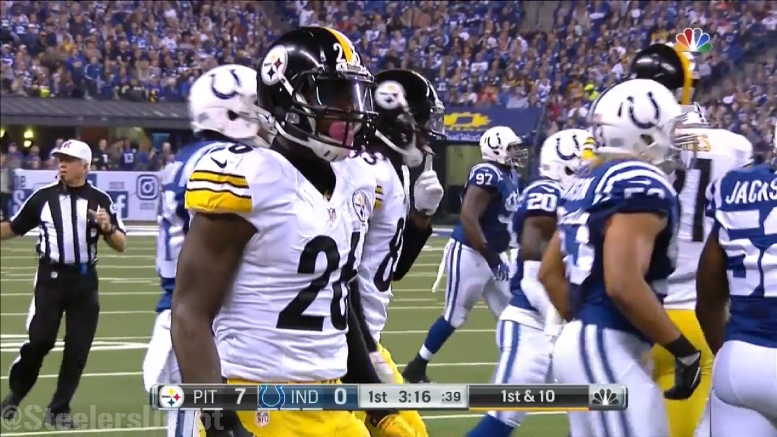From the middle of the third quarter in the game against the Ravens to the third snap of the game against the Colts, Pittsburgh Steelers running back Le’Veon Bell did not come off the field for a single snap. Including the entirety of the games against the Cowboys and the Browns, the fourth-year running back was on the field for Pittsburgh on 190 consecutive snaps.
And I can’t help but wonder if, had the Steelers not been on a short week, he would have stayed on the field for every snap against the Colts as well. But Bell logged a career-high 36 touches on Sunday against the Browns. And then he still played all but seven snaps against the Colts, which is the highest number of snaps that he has taken off for any game. And of course five of those snaps came at the end of the game with a 21-point lead in hand.
Le’Veon Bell is a true workhorse running back, and Head Coach Mike Tomlin knows it. But he is also smart about the way in which he uses his workhorse, because, as I have written about previously this season, he understands that he can distribute his workload to assignments in the backfield as either a ball carrier or pass protector and up at the line of scrimmage as a route runner.
In just eight games so far this year, the former second-round draft choice has already accumulated 208 touches, which works out on average to exactly 26 touches per game. Over the course of a full 16-game schedule, that would work out to the equivalent of 416 touches, which, needless to say, is an incredible number.
Compare that to 2015, where in only six games of action, he averaged a bit under 23 touches per game. That, however, obviously needs to be qualified because he was injured in the second quarter of that final game. In 2014, over a full 16-game schedule, he averaged 23.3 touches per game. As a rookie in 2013 22.2 touches per game.
As a general barometer, it is clear that his per-game usage has been on an upward trajectory over the course of his career, considering that his 2015 average would have likely fallen between 24 and 26 touches has his final game of the year not ended early.
But part of the reason that he has been able to so seamlessly increase his workload is because it has become distributed in greater and greater amounts to the receiving game. This year, in fact, over a quarter of all of his touches have come on receptions. In 2014, when he caught 83 passes, that represented only 22 percent of his touches, in comparison to the 27.5 percent of 2016.
It is because of this workload distribution between the responsibilities of a running back and a wide receiver that Bell is able to sustain such a high snap count game in and game out. And why his brief respite last week on a short week in an eventual blowout is likely to be an outlier.








